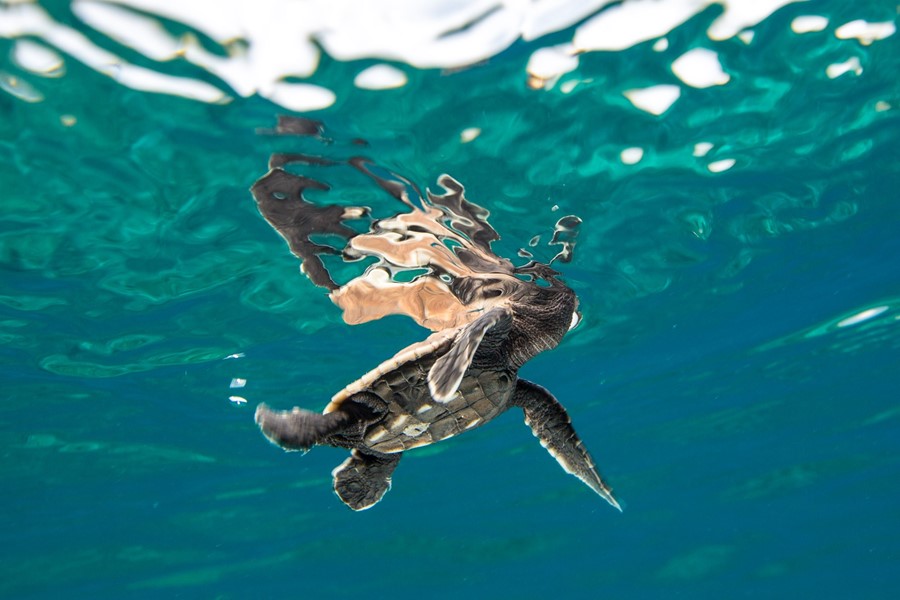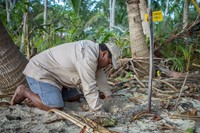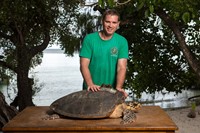Not only are the idyllic Arnavon Islands a beautiful tropical hideaway, they’re also a haven for the critically endangered (and slightly bio-fluorescent) Hawksbill sea turtle, super/collider explains
The Arnavon Islands
GPS Coordinates: 25°39′N 106°51′E
From above, the Arnavon Islands are just three more specks of paradise in the seemingly endless sea surrounding the remote Solomon Islands. Fringed with tropical coral reefs and covered in lush forests, Sikopo, Kerehikapa and tiny Maleivona look idyllic for those in search of solitude – with long white beaches stretching around their empty shores.
Down at sand, surf and palm tree level, these same beaches make the Arnavons a top destination for one of the ocean’s most iconic species: the critically-endangered Hawksbill sea turtle. After mating in the open ocean, female turtles come here to lay their eggs in the sand, with baby turtles hatching, emerging and wiggling their way down to the water two months later.
“The Arnavon Islands are the largest rookery for the critically endangered Hawksbill turtle in the Western Pacific,” explains Rick Hamilton, programme director for Melanesia at The Nature Conservancy. “There are few predators there, for instance no native monitor lizards which eat turtle eggs, unlike on the mainland. The islands also have a lot of vegetation – Hawksbills are the only turtle that insists on nesting under vegetation. Finally, and this is just a theory, but the Arnavons’ location within the Manning Strait results in high current flows – so maybe this area favours the rapid export of hatchlings out of the predator-rich coastal shallows and into the deeper blue waters.”
Beyond being cute and somewhat famous (think Finding Nemo), Hawksbills are an important part of the marine ecosystem around the Arnavons and elsewhere, helping to maintain the health of coral reefs and sea grass beds. While specially adapted for swimming in the open ocean, they spend a lot of time around coral reefs and feed on some pretty weird stuff. Their diet includes the deadly Portuguese Man O War and other venomous jellyfish, which they eat with their eyes closed to avoid the toxins, plus glowing coral which give the Hawksbill a slight biofluorescence – the only reptile with this trippy trait.
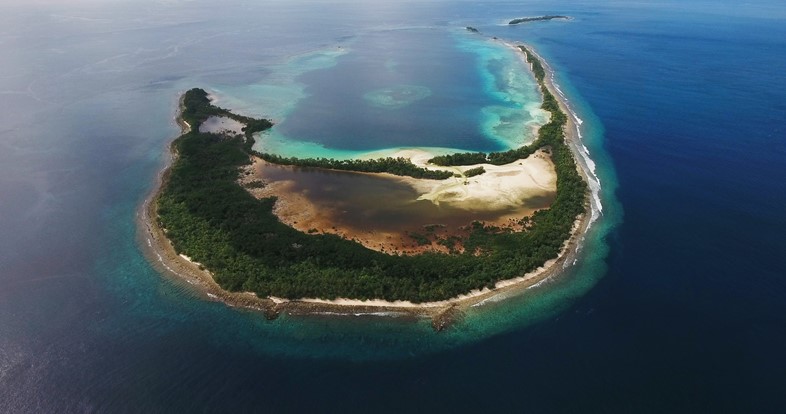
On the Arnavon Islands, Hawksbills had been heavily harvested for their shells for over 200 years. Even in the early 1990s, about 5000 turtles a year were being taken – which is where The Nature Conservancy came in. Working with competing local communities and the central government, the organisation established the Arnavons Marine Community Conservation Area in 1995, which was the first in the South Pacific. Beyond protecting one of the world's most important Hawksbill nesting sites, the marine reserve has brought different communities together and helped change the way the islanders earn their living.
“For the last 20 years we’ve had community rangers based on the Arnavons,” he explains. “They do turtle monitoring as well as enforcement. What we’ve seen over that time is a pretty impressive recovery in terms of nesting numbers.” In fact, since the conservation area’s establishment, the Arnavons have undergone a remarkable recovery. The annual number of Hawksbill turtle nests has doubled and scientific surveys below the waves show that other species are also thriving. It’s also giving researchers the chance to study this rebounding population.
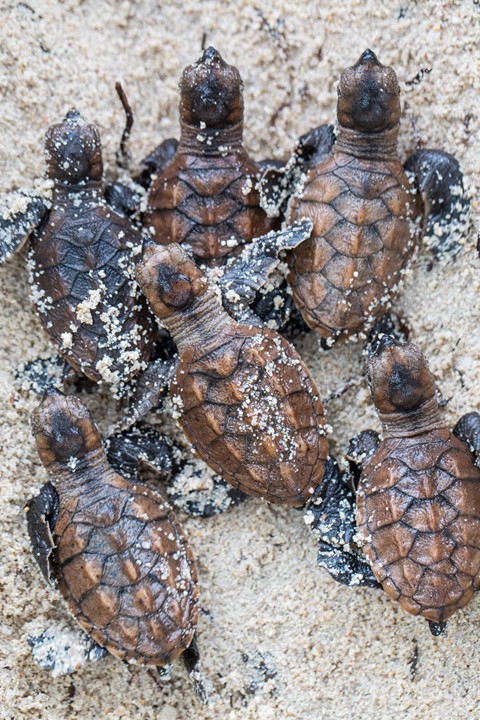
“We did a project this year putting satellite tags on the turtles, because we wanted to know, firstly, where they go in between nesting, and secondly where they migrate to,” explains Hamilton. “What we've found is that the protected area does a good job, because they spend about 95% of their time between nesting there – they don’t really go far. When they migrate to their foraging grounds they go to Australia, over 2000km away, and that’s a protected area too.”
How on Earth?
While remote, the Solomons can be reached pretty easily from Australia. Visitor fees paid to the ACMCA help cover some of the costs of maintaining this unique ecosystem, and show that there is global interest in saving species.

For more information, visit the website.
